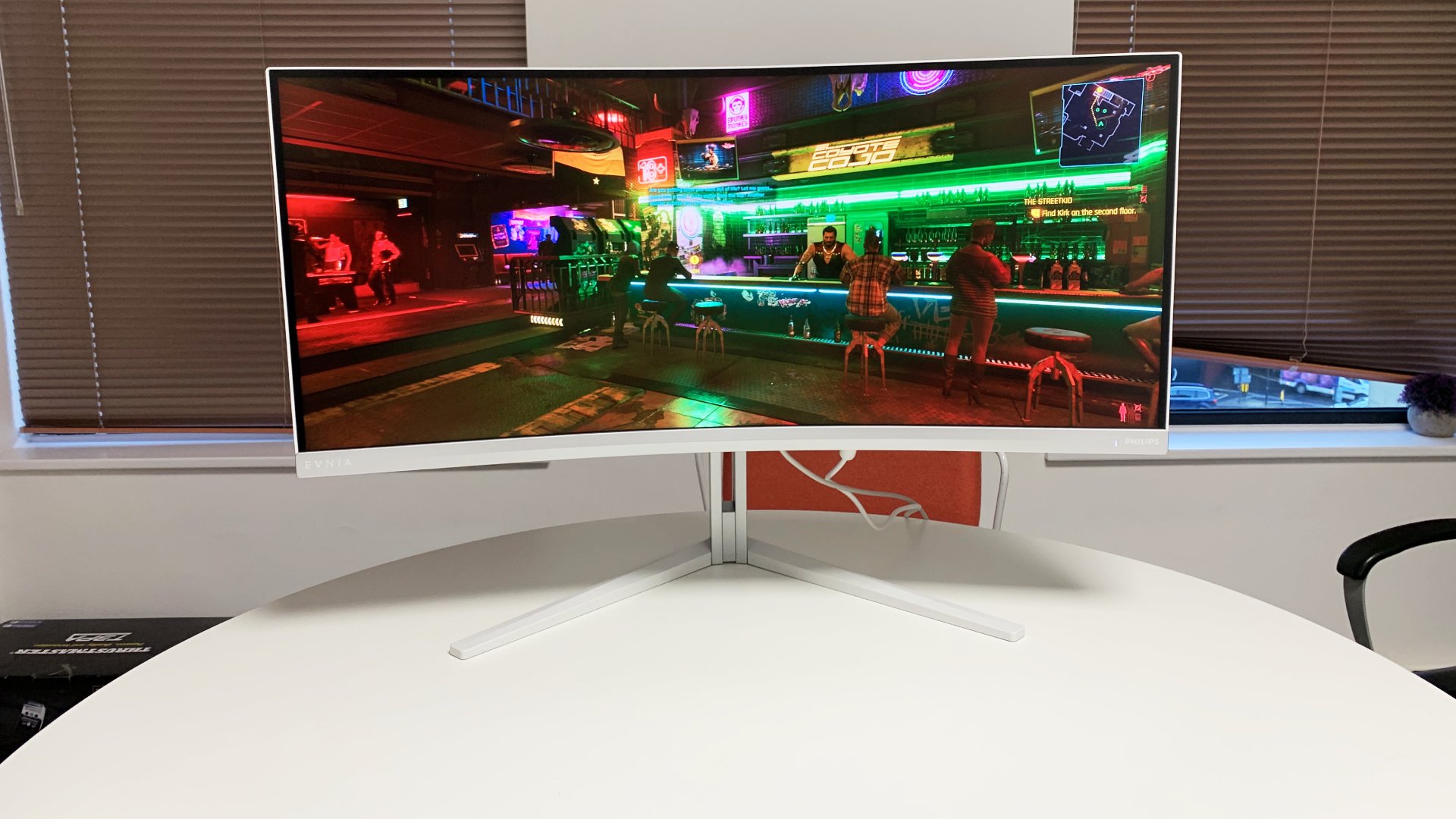Our Verdict
1,400 nits of eye-popping miniLED sizzle is what the Evnia promises. And that's absolutely what it delivers, sometimes. Unfortunately, it also serves up yet another wonky miniLED backlight algorithm, some basic color calibration issues and merely adequate pixel response. There's a very nice display beneath all those flaws. But it's rather well hidden, for now.
For
- Super punchy miniLED backlight
- Excellent inherent panel contrast
- Good connectivity including USB-C
Against
- Local-dimming algorithm is a mess
- Color calibration needs work
- Pixel response is middling
PC Gamer's got your back
Are miniLED backlights the future of display tech? Or temporary distraction while we wait for OLED and microLED to come good for the PC?
Enter the new Philips Evnia 34M2C7600MV, another of the brave new miniLED monitor brigade. On paper, this thing is seriously supercharged with 1,400 nits of peak brightness. But we've yet to see a miniLED monitor that didn't come with serious issues. Can Philips crack the code to flawless miniLED backlight performance?
You'd hope so, for the money. This thing really costs at its $1,800 list price. Speaking of money, at least the basic form factor is right on it. A 34-inch ultrawide panel with a 21:9 aspect ratio and gentle but immersive 1500R curve remains one of our absolute favourites. And the 3,440 by 1,440 pixel resolution is likewise a great compromise between visual detail and decent frame rates.
Sure, you could say the 110 DPI pixel density is a little lacking versus, say, a 27-inch or 32-inch 4K monitor. But then those higher resolutions hammer your GPU when it comes to frame rates.
Screen size: 34-inch
Resolution: 3,440 x 1,440
Brightness: 1,400 nits peak HDR, 720 nits SDR
Response time: 2.5ms
Refresh rate: 165Hz
Viewing angle: 178° H&V
Contrast ratio: 3,000:1 (panel native)
Features: VA panel, 97% DCI-P3, adaptive sync, 1x DisplayPort 1.4, 2x HDMI 2.1, USB Type-C with 90W PD, USB hub, 1500R curve
Price: $1,800 | £1,600
Anyway, without a doubt the Philips Evnia 34M2C7600MV's defining feature is that miniLED backlight. Not only does it deliver 1,152 local dimming zones for what ought to be fairly precise lighting control. It's also good for that 1,400 nit peak HDR performance.
Indeed, if anything the number Philips quotes for this screen's SDR brightness is even more eye popping at 720 nits. That's the brightest we've ever seen for a screen's SDR mode.
Intriguingly, this is all based around a VA panel rather than IPS screen technology. VA tech offers much better inherent contrast than IPS. But then the miniLED backlight is supposed to take care of the contrast and IPS tends to be a fair bit quicker.
On that note, Philips is quoting 2.5ms for grey-to-grey response, which is an unusual stat. Response time specs aren't terribly reliable, but we're used to seeing 1ms and 2ms panels, never 2.5ms. Whatever, by Philips' own estimations, this is not at the cutting edge of LCD technology for speed. Nor really would you expect it to be given the use of a VA panel.
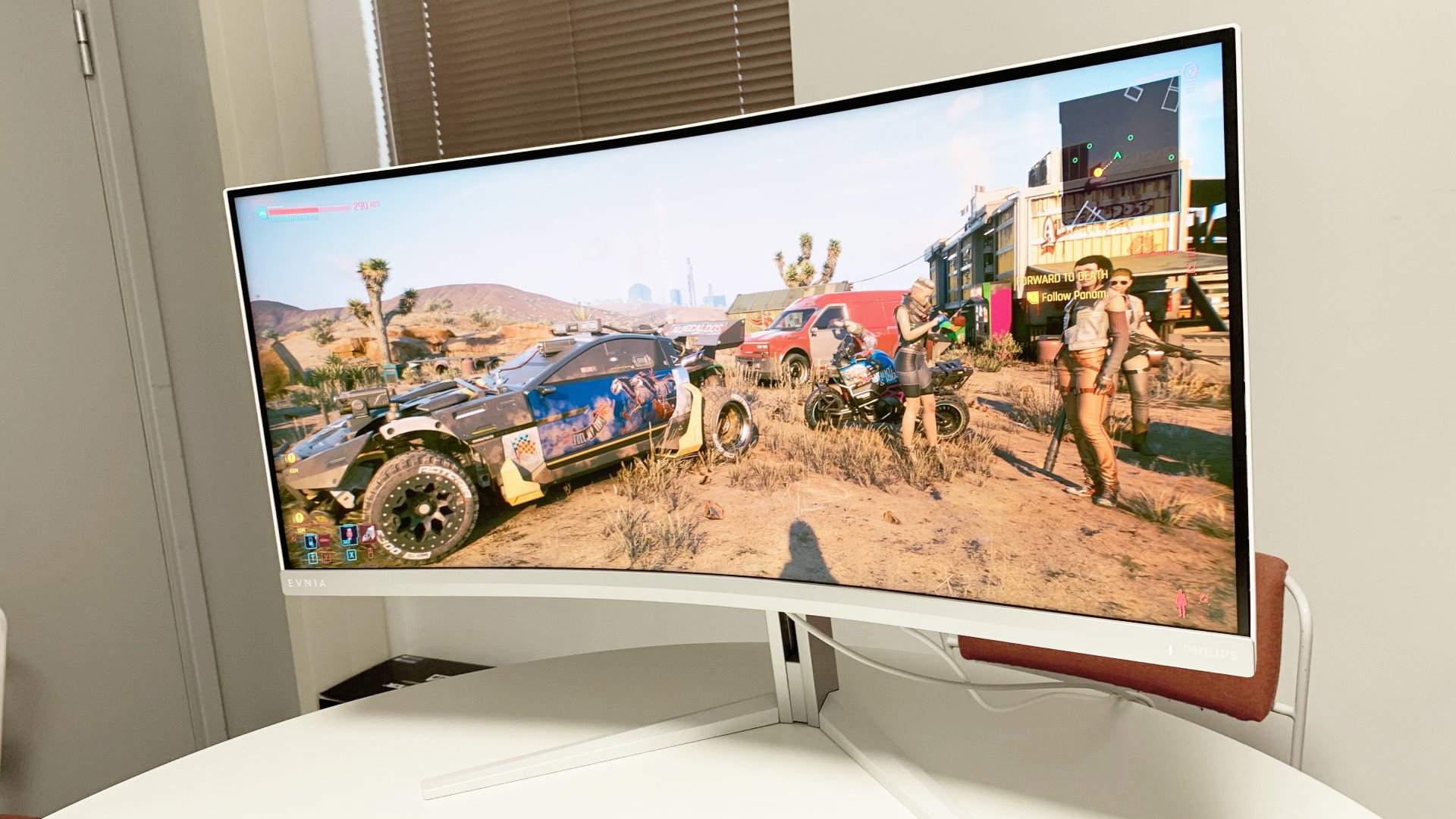
That said, you do get 165Hz refresh, which should be plenty for all but the most demanding esports types. The color precision specs also bode well, with 97% coverage of the DCI-P3 digital cinema gamut and sub-2 Delta Es.
Connectivity is another strong point with dual HDMI 2.1, DisplayPort 1.4 and USB-C with 90W of power delivery allowing for a single-cable solution with a laptop, albeit that 90W spec isn't enough for a proper gaming laptop. The one catch is that in our testing, the panel refresh was limited to 120Hz over HDMI, despite the HDMI 2.1 spec. You'll need to use DisplayPort or USB-C for the full 165Hz.
Rounding out the main features is a beautifully built chassis and stand featuring unusual off-white hues and Philips signature Ambiglow mood lighting. The latter comprises 14 RGB LEDs on the rear of the chassis that can be set to do anything from bathe the wall behind in a static glow to react to the visuals and colours being displayed on the screen itself.
Oh and the stand has height, tilt and swivel adjustment. No question, this is a very nice looking bit of kit from an industrial design perspective. It looks and feels expensive.
But how does it look in the most important way, namely image quality? Out of the box, wow, this thing is punchy. Even in SDR mode it has some serious sizzle. And thanks to the VA tech, the black levels remain well controlled at full brightness in SDR mode with the local dimming disabled.
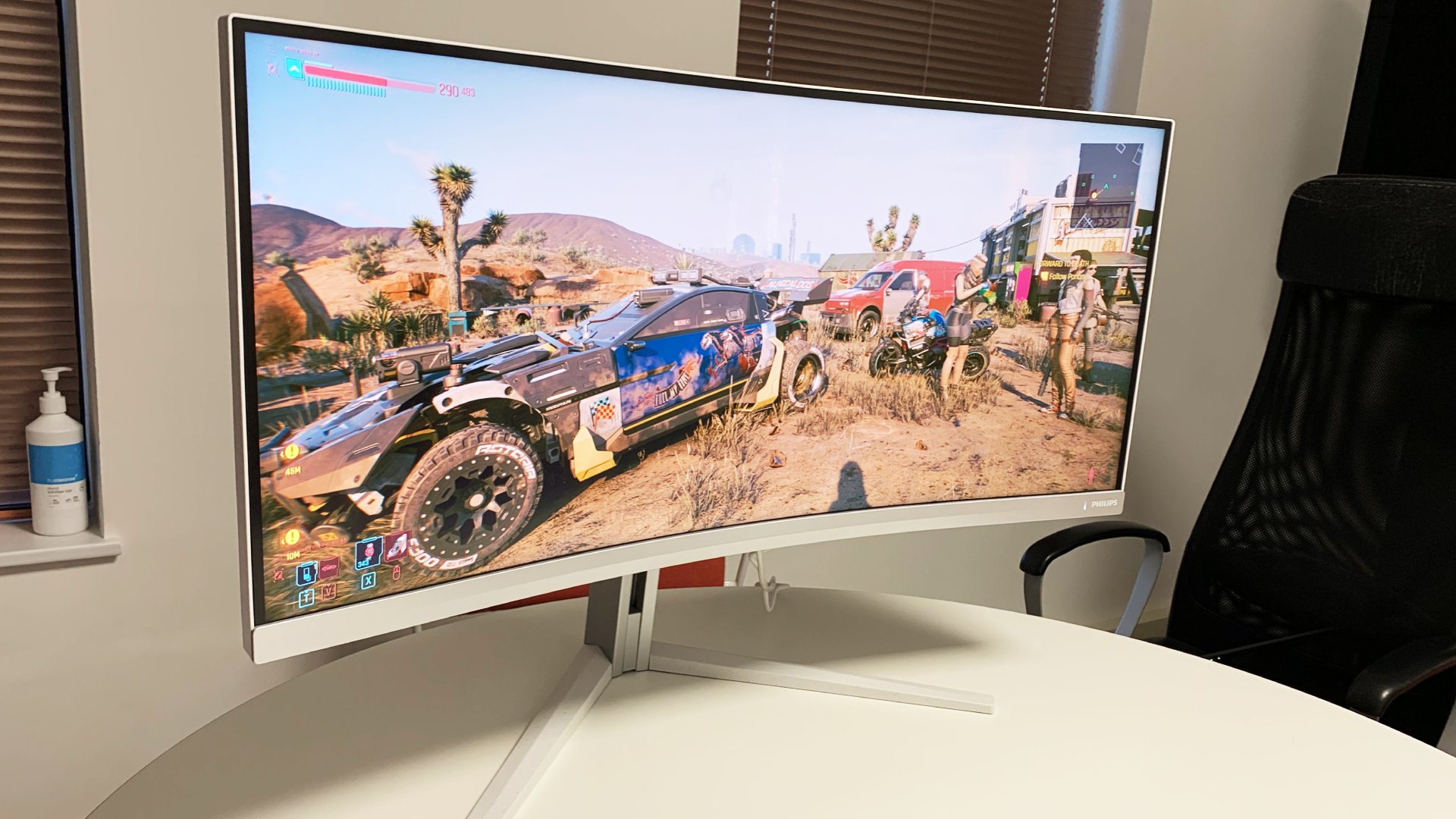
There are some issues with the Evnia's SDR performance, but we'll get back to those. Because we need to talk a little about this screen's HDR performance. It's a bit of a mess.
To be clear, this monitor is capable of reaching spectacular highs. If you're looking for a monitor that will burn images onto the back of your retinas, this is it. The actual hardware is great. But the calibration of that 1,152-zone miniLED backlight is questionable at best.
Philips includes various HDR modes including DisplayHDR 1400, for which the panel is certified, game, cinema and photo. Using DisplayHDR 1400, the dimming algorithm keeps the lighting so low most of the time, you lose all detail in darker scenes.
Take the underground bar scene in Cyberpunk 2077. You basically can't see anything. Switch to HDR Game mode and the lighting levels are lifted, but the colors are shifted to levels of extreme saturation.
Even in outdoor scenes, the DisplayHDR 1400 mode looks and disappointing, even when you increase the user configurable local dimming to its maximum setting, while the colours in HDR game mode look even sillier.
Funnily enough, the Evnia at its best in Cyberpunk—and any other game that supports HDR—in SDR mode. It's seriously punchy, the inherent contrast of the VA panel tech keeps black levels in check and the colors are reasonable.
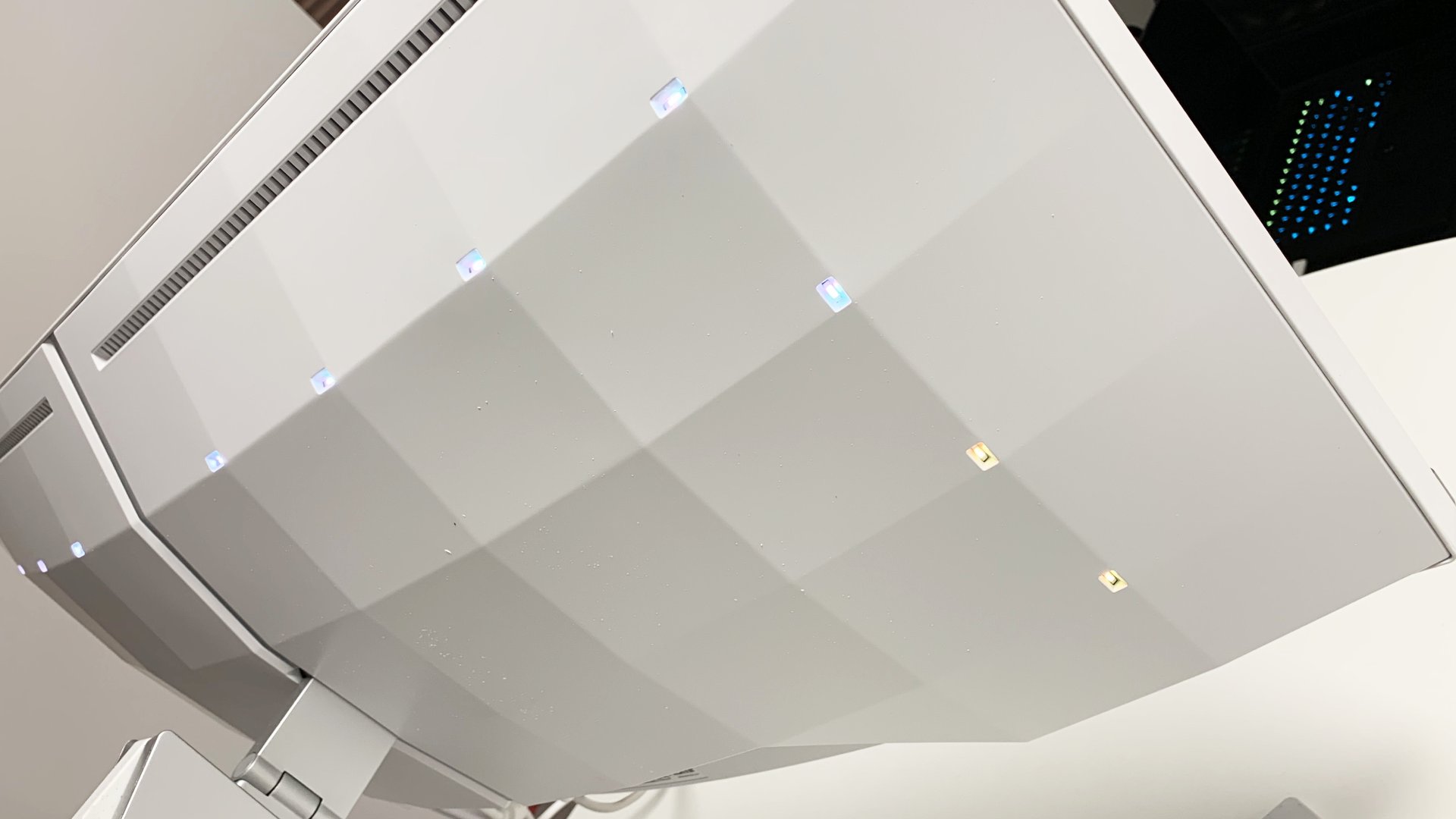
Reasonable, that is, for gaming. Back on the desktop, there's over saturation in the default SDR mode. Frustratingly, the SDR colors are at their most accurate when running in HDR mode, but SDR content brightness is limited in that mode.
So, to recap, this a a 1,400 nit HDR monitor that looks punchiest in games running is SDR mode, but has better SDR color accuracy in HDR mode, albeit SDR content brightness is then limited.
Like we said, it's all a bit of a mess and reflects the complexities of both HDR support and miniLED backlights. Even with 1,152 zones, each zone is shared by thousands of pixels. There's nowhere near the lighting precision and control you get with a per-pixel technology like OLED.
Ultimately, any miniLED implementation is going to be a compromise. Trade offs always have to be made. If, for instance, the screen is displaying a small bright object on a dark background, should the zones behind it be fully fired up, leading to blooming? Or should black levels be prioritized. There is no correct answer, only preferences and there are countless other tricky decisions to make.
One thing this Philips panel does do well in HDR mode is manage the local dimming on the Windows desktop without the various backlight zones popping on and off all too obviously. You can see the backlight reacting as you move windows around the screen, but it's all pretty subtle and much better than, say, Samsung's miniLED monitors which are incredibly clumsy with their backlight modulation.
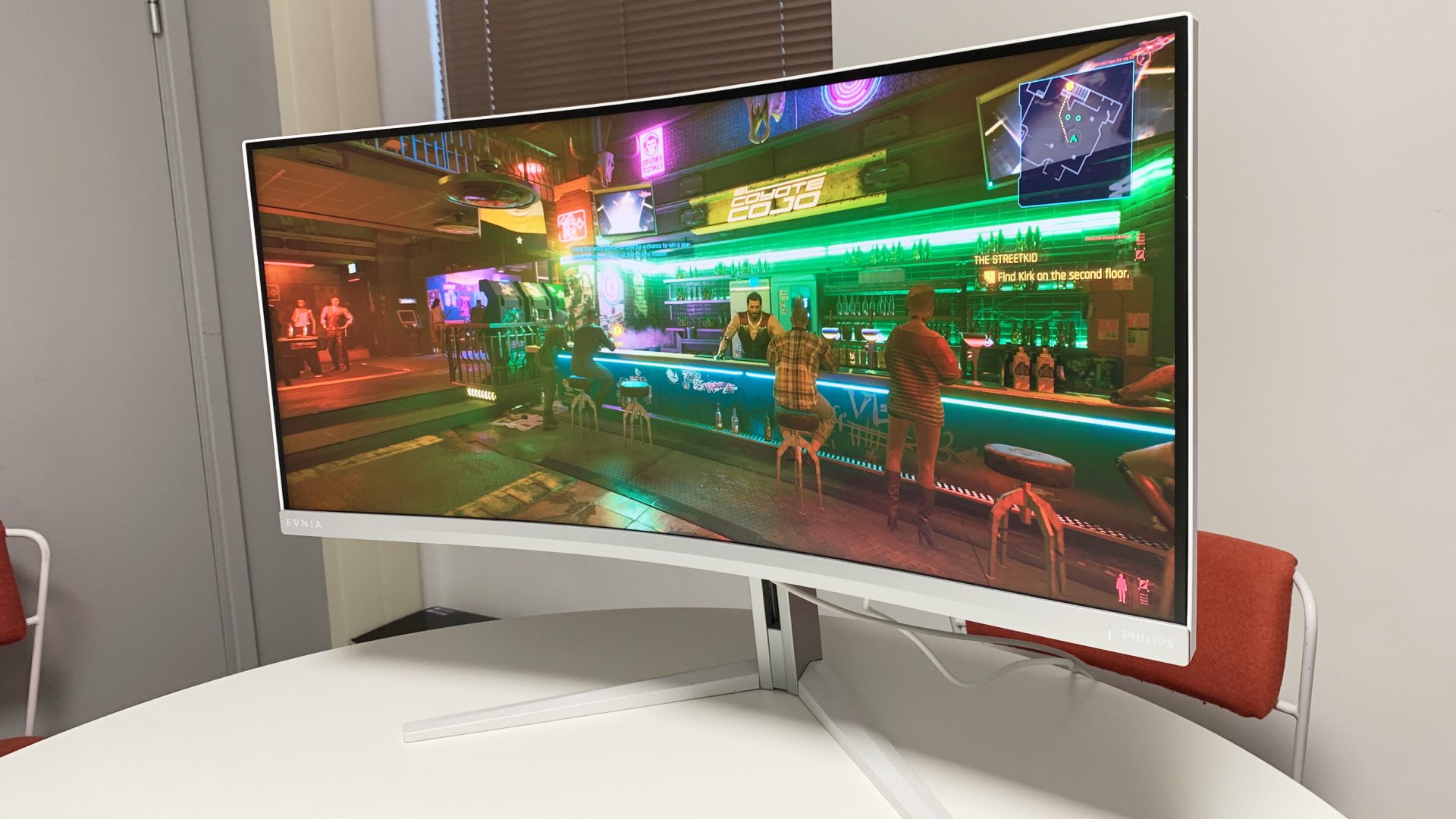

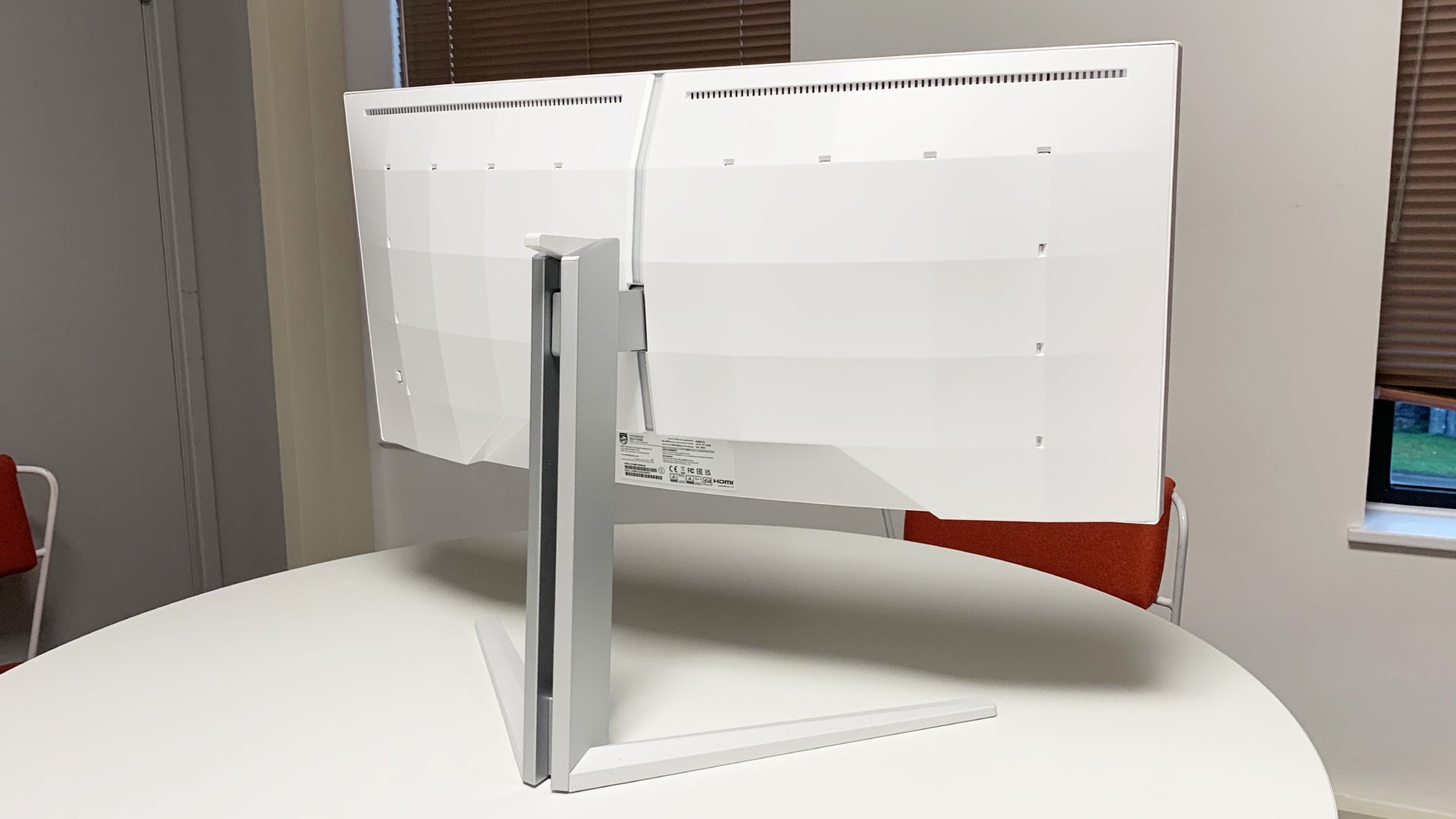
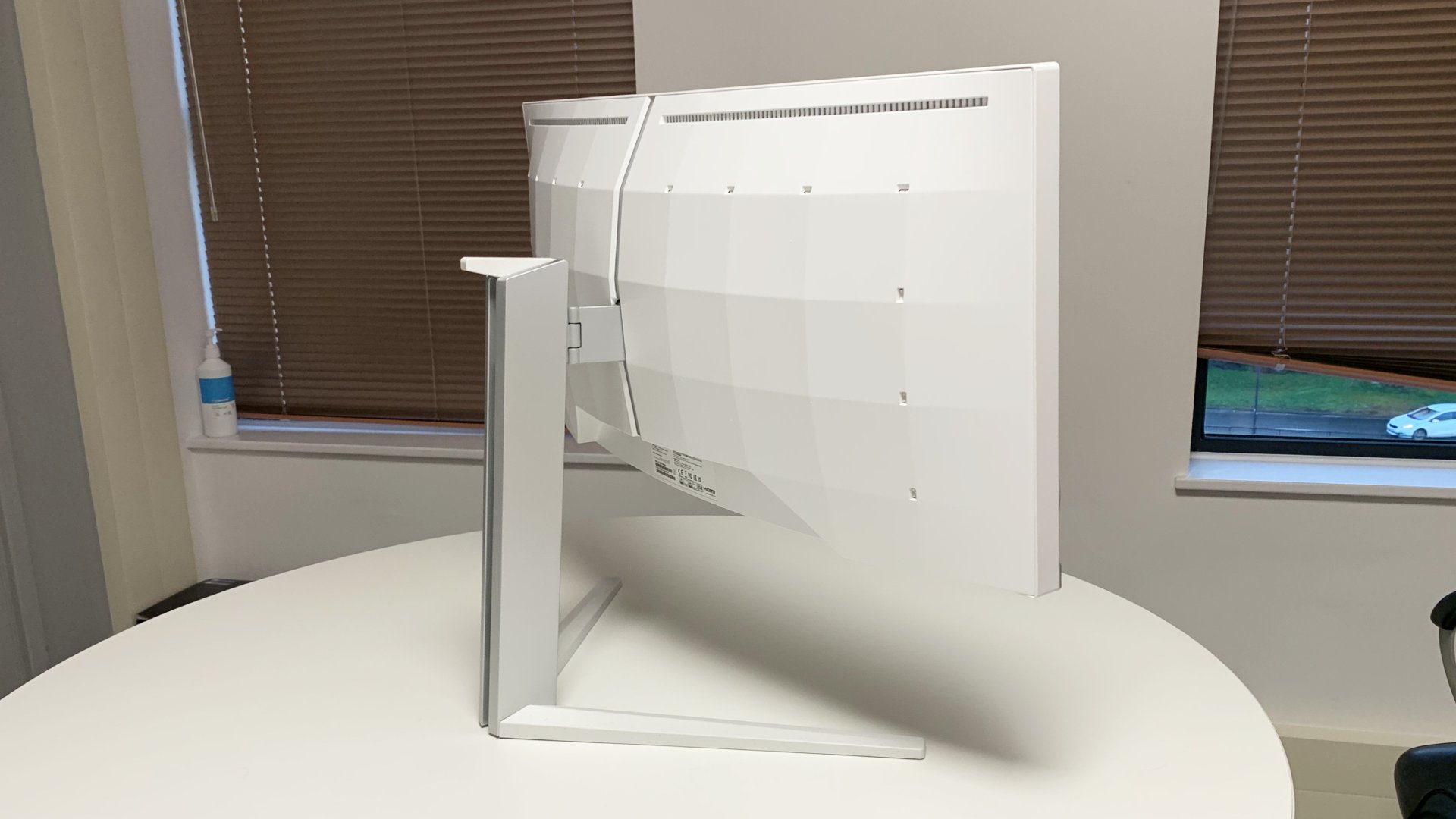
Backlighting issues aside, response is another relative weakness of the Evnia. Philips claims 2.5ms, which is nothing special these days. But this screen doesn't even look good for that figure. Yes, you can choose between three levels of pixel overdrive. But with overdrive disabled and at its lowest settings, there's some fairly obvious old school blur.
That can be dialled out to some degree with the overdrive. But as you ramp up through the levels, overshoot and inverse ghosting become increasing issues. The best compromise is middle overdrive setting, but even that suffers from both a little blur and some overshoot. In short, for response this monitor is off the pace of both the best IPS monitors and Samsung's latest VA screens.
All of which means there's a good screen lurking in here somewhere. The hardware is nice. At its best running certain HDR content, mainly HDR video mastered to just the right luminosity, it can look epic. But most of the time, you're battling with some or other issue. And the fact that it actually looks best in-game in SDR mode with the local dimming disabled sums up what a waste of time, effect and expense the miniLED tech is as implemented here.
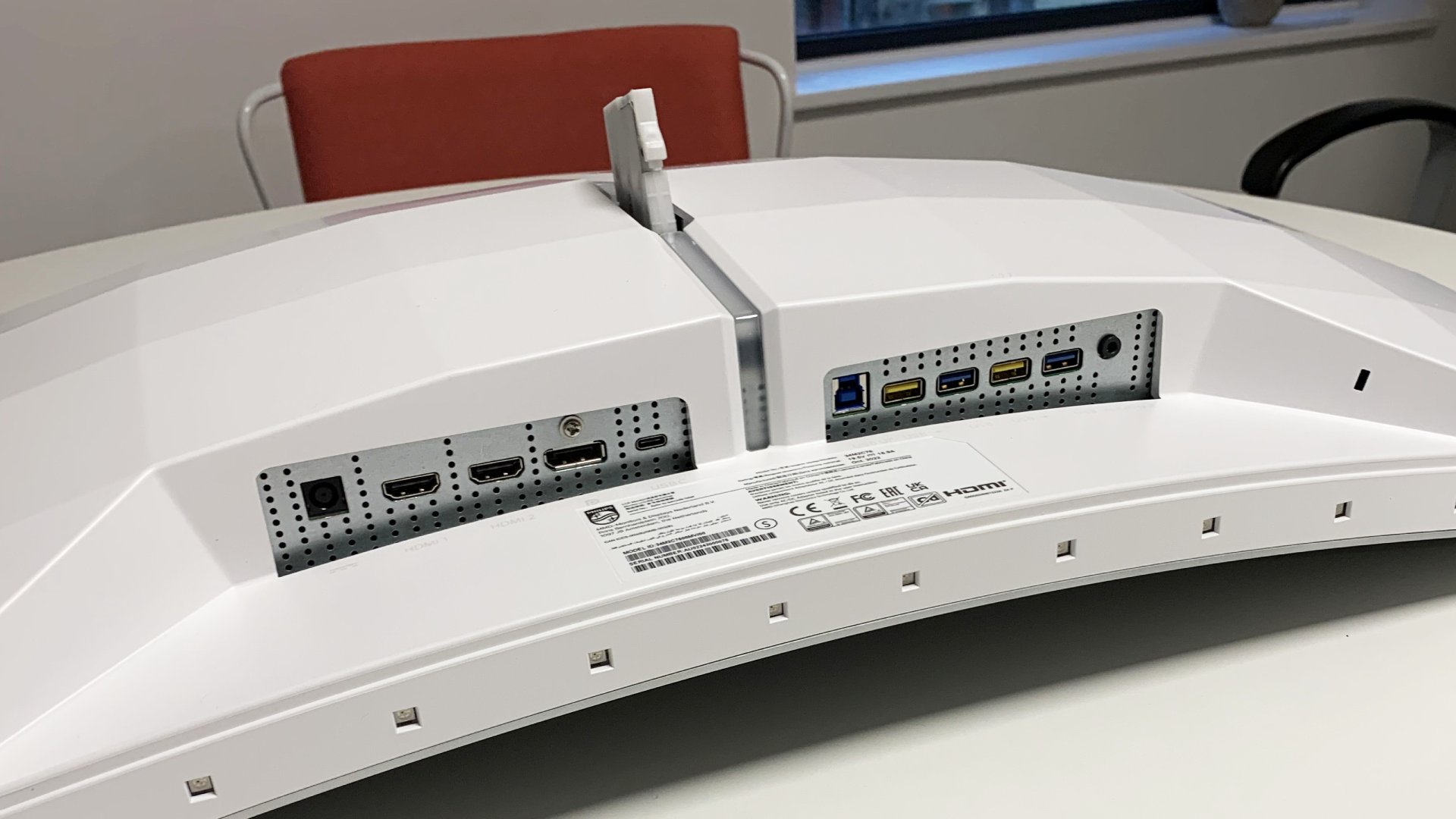
Of course, the Philips Evnia 34M2C7600MV is far from unique in being a miniLED monitor with obvious issues. We've yet to see one with calibration that we'd be even close to happy with. But, at this incredibly lofty price level, the problems are totally unacceptable. Even if the color and HDR calibration was miles better and the pixel response was cutting edge for an LCD monitor, this panel would still look ridiculously overpriced.
We're left, then, wondering if the problems with miniLED reflect the fact that it remains a fairly new technology, or if it's just an overly complex and a clunky interim solution to a problem that can only truly be solved by per-pixel technologies like OLED and microLED. While we tend towards the latter, we'd be very happy to be proved wrong. But this Philips monitor very definitely doesn't come close to doing that.
1,400 nits of eye-popping miniLED sizzle is what the Evnia promises. And that's absolutely what it delivers, sometimes. Unfortunately, it also serves up yet another wonky miniLED backlight algorithm, some basic color calibration issues and merely adequate pixel response. There's a very nice display beneath all those flaws. But it's rather well hidden, for now.

Jeremy has been writing about technology and PCs since the 90nm Netburst era (Google it!) and enjoys nothing more than a serious dissertation on the finer points of monitor input lag and overshoot followed by a forensic examination of advanced lithography. Or maybe he just likes machines that go “ping!” He also has a thing for tennis and cars.
